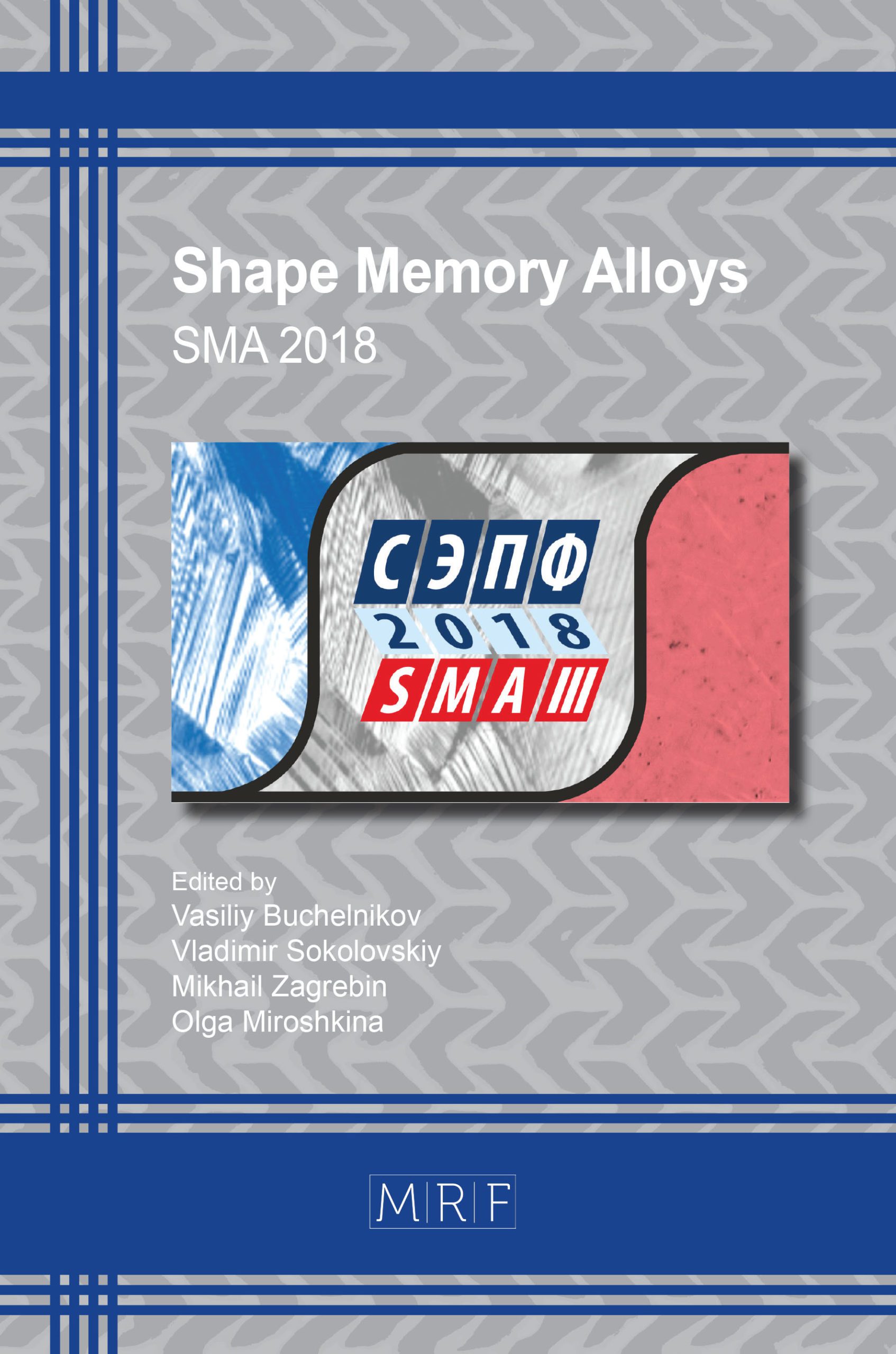Transmission Electron Microscopy Study of the Atomic Structure of Amorphous Ti-Ta-Ni Surface Alloy
Viktor O. Semin
Abstract. This paper presents experimental results of studying of the atomic (clustered) structure of an amorphous Ti-Ta-Ni surface alloy using real-space radial distribution functions (RDF) and transmission electron microscopy (TEM). The characterization of the structure by electron diffraction methods has shown that the surface alloy of a 2 μm thickness is completely amorphous without any crystalline phases. Based on the electron diffraction data chemical and topological short-range order and a certain degree of medium-range order in this alloy are found. It is also shown that topological short-range order in the amorphous Ti-Ta-Ni surface alloys is well approximated by the coordination polyhedra based on the intermetallic compounds Ti2Ni and B2(TiNi): the icosahedron Ti7Ni6 and the rhombic dodecahedron Ti7Ni8.
Keywords
Surface Alloy, Amorphous Structure, Short-Range Order, Radial Distribution Function
Published online 11/15/2018, 6 pages
Copyright © 2018 by the author(s)
Published under license by Materials Research Forum LLC., Millersville PA, USA
Citation: Viktor O. Semin, ‘Transmission Electron Microscopy Study of the Atomic Structure of Amorphous Ti-Ta-Ni Surface Alloy’, Materials Research Proceedings, Vol. 9, pp 68-73, 2018
DOI: http://dx.doi.org/10.21741/9781644900017-14
The article was published as article 14 of the book Shape Memory Alloys
References
[1] T. A. Phan, M. Hara, H. Oguchi, H. Kuwano Current sensors using Fe–B–Nd–Nb magnetic metallic glass micro-cantilevers, Microel. Eng. 135 (2015) 28-31. https://doi.org/10.1016/j.mee.2015.02.043
[2] Y. Hayashi, H. Yamazaki, D. Ono, K. Masunishi, T. Ikehashi, Investigation of PdCuSi metallic glass film for hysteresis-free and fast response capacitive MEMS hydrogen sensors, Int. J. Hydrog. Energy 43 (2018) 9438-9445. https://doi.org/10.1016/j.mee.2015.02.043
[3] J.P. Chu, T.-Y. Liu, C.-L. Li, C.-H. Wang, J.S.C. Jang, M.-J. Chen, S.-H. Chang, W.-C. Huang, Fabrication and characterizations of thin film metallic glasses: Antibacterial property and durability study for medical application, Thin Solid Films. 561 (2014) 102-107. https://doi.org/10.1016/j.tsf.2013.08.111
[4] F.E. Luborsky (Ed.), Amorphous Metallic Alloys, first ed., Butterworths, London, 1983. https://doi.org/10.1016/B978-0-408-11030-3.50006-6
[5] L.L. Meisner, A.B. Markov, V.P. Rotshtein , G.E. Ozur, S.N. Meisner, E.V. Yakovlev, V.O. Semin, Yu.P. Mironov, T.M. Poletika, S.L. Girsova, D.A. Shepel, Microstructural characterization of Ti-Ta-based surface alloy fabricated on TiNi SMA by additive pulsed electron-beam melting of film/substrate system, J. Alloys Comp. 730 (2018) 376-385. https://doi.org/10.1016/j.jallcom.2017.09.238
[6] D.J.H. Cockayne, The study of nanovolumes of amorphous materials using electron scattering, Annu. Rev. Mater. Res. 37 (2007) 159-187. https://doi.org/10.1146/annurev.matsci.35.082803.103337
[7] E.J. Kirkland, Advanced computing in electron microscopy, Plenum Press, 1998. https://doi.org/10.1007/978-1-4757-4406-4
[8] C. Gammer, C.Mangler, C.Rentenberger, H.P.Karnthaler, Quantitative local profile analysis of nanomaterials by electron diffraction, Scripta Mater. 63 (2010) 312-315. https://doi.org/10.1016/j.scriptamat.2010.04.019
[9] G.A. Yurko, J.W. Barton, J.G. Parr,The crystal structure of Ti2Ni, Acta Cryst. 12 (1959) 909-911. https://doi.org/10.1107/S0365110X59002559
[10] K. Otsuka, X. Ren, Physical metallurgy of Ti-Ni-based shape memory alloys, Progr. Mater. Sci. 50 (2005) 511-678. https://doi.org/10.1016/j.pmatsci.2004.10.001































